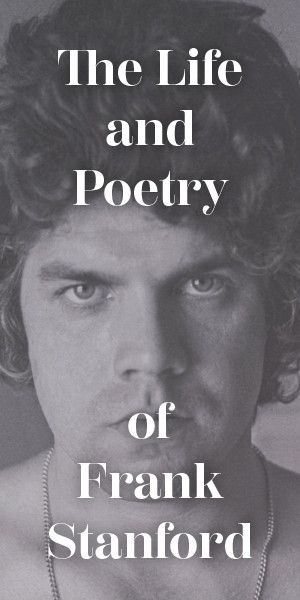Nothing Can Dim the Light
By Donna Battle Pierce

“Sifter” (2010), by Celestia Morgan, from the series The Family Recipe
Dozens of tiny electric bulbs lined the bold star logo twinkling above the new Sky-Hi Theater west of Columbia, Missouri, on old Highway 63. It was 1965, and I was a dazzled eighth-grader with my family at the drive-in.
I came here countless times throughout my childhood and teenage years to see movies—first, with parents who wouldn’t allow my siblings and me to visit the snack stand or public restrooms, attempting to shield us from moviegoers who continued protesting the previous year’s Civil Rights Act. Back then, this region of Missouri was known as “Little Dixie.” And then later, I was promoted to driver for my three younger siblings. We brought snacks from home, and Mom taught us how to make homemade popcorn in the old-school style of heating a thin layer of peanut oil in a large heavy pot before sprinkling in tiny, white hulless kernels and shaking. As a high school senior, I popped tender kernels for my dates to the movies, scooping the warm popped corn into brown bags before shaking with salt.
The Sky-Hi was central to my social life in Columbia, but I never paid particular attention to the elegant two-story house across the street—and nobody mentioned what I would later learn was a monument to Black achievement. When I returned to my hometown as an adult, after living in New York, Indiana, and California, I discovered that in 1928 a Black female entrepreneur, Annie Fisher, had built the sprawling home across from the Sky-Hi. Fisher had flourished during the first decades of the twentieth century with a thriving catering and mail-order business. She even sold her beaten biscuits at the 1904 St. Louis World’s Fair.
Growing up, you’d think I might have learned about Annie in school. When I was a child, Mrs. Emma Mae Turner, my family’s sturdy, confident neighbor who had been born in 1913, insisted we sample a tiny, flat pastry from her small plate of beaten biscuits filled with famous Boone County ham. I can’t remember the occasion when Mrs. Turner passed those beaten biscuits. It could have been during one of the many community events my young parents shared with her. Or it could have been at a St. Paul African Methodist Episcopal church dinner, an educators’ planning session, or a civil rights meeting. Later, I would learn from Mrs. Turner that her mother had baked biscuits with Annie Fisher, her fellow St. Paul AME church member, both using the early twentieth-century kitchen tool known as a “biscuit brake” or “biscuit break” to complete the heavy beating process essential to achieve the pastry’s almost cracker-like consistency. Mrs. Turner said that according to her mother, enslaved cooks had been ordered to pound batches of dough about 1,500 times with an axe to develop the gluten. (In my testing, I’ve found that it also works to break down the gluten in Annie Fisher’s recipe by using either a food processor or passing the biscuit dough repeatedly through a manual pasta dough roller.)
Yet Columbia—and I—did not fully discover our Annie Fisher legacy until the 1990s, when Verna Laboy, from Peoria, Illinois, dressed in costumes to present biscuit-making demonstrations designed to unravel and share Annie Fisher’s story to children and community groups.
“It’s like the spirit of Annie Fisher just possessed me, and I just became passionate about telling her story because it was one of resilience and success and a seemingly impossible period of time,” Laboy told Columbia’s Vox Magazine in 2017. “Not only for women, but for a Black woman at that.” In today’s dollars, Fisher would have been a millionaire. A thin slice of country ham on one of her famous biscuits was considered a delicacy.
My dad, who helped end segregation in the Columbia School District when he became the first Black faculty member at Hickman High, introduced me to Verna Laboy thirty years ago. After she shared parts of her Annie Fisher presentation with me at my parents’ home on Rollins Road, I decided to embark on a research project on this icon from Columbia’s past.
I wish I’d learned about Annie Fisher sooner in life for more than culinary reasons. When my sisters and I integrated our Columbia elementary school in the early 1960s, classmates were given the option of not playing with us; our texts (and teachers) didn’t cover “Negro history.” Described by Mom and Dad as their “brave little soldiers of integration,” we would have been deeply empowered and inspired by news of this hometown heroine’s accomplishments.
In 1997, I had the opportunity to tour Annie Fisher’s sprawling house built on old Highway 63. Long before the Sky-Hi, Fisher operated her restaurant and catering business from this home, which was demolished in 2011 despite Black community activist Sheila Ruffin’s valiant effort to save it.
John King, the white owner of the grocery where Fisher filled her catering and shopping orders, bought the house after her death in 1938. His widow, Dr. Chaille King, agreed to give me a tour before she moved out.
“We need to get something straight right now,” said Dr. King, a frail, deeply wrinkled woman with sparkling eyes, walking slowly as she led me through the hallway. “I agreed to this interview solely for the purpose of talking about Annie Fisher and showing you her kitchen and office. You have every right to know what I know about her. She became a very famous woman and a credit to the colored race. But, I’m a very private person. Do we understand each other?”
I responded just the way I would have answered my grandmother: “Yes, ma’am.” And then I asked, “Did you know her?”
“I did, a bit,” King said. “But she was semi-retired when I moved here as a single woman to practice psychiatry. I met her after I married Mr. King, who knew her as well as anyone in Columbia. He owned a downtown grocery store where they did business together. And, of course, this house also included the restaurant she built ten years before she died. That’s pretty much all I have to offer about her.”
I nodded, without much interest in more explanation. Instead, I eagerly awaited my chance to see Annie Fisher’s kitchen and office, both of which were reported to have remained unchanged since Fisher’s death.
“Follow me,” she said.
The house was decorated with ornate Chinese furnishings and artwork, but the 1920s-era white kitchen was sparse. Walking through her home, I felt Annie Fisher’s nudge for me to share her story—a call that marked the beginning of my sense of urgency to research and write about Black people in the culinary field. The pages haven’t turned quickly. I intended to write a book about Annie Fisher, but a decade ago no publisher was interested. Even today, people are just learning about Columbia’s successful Black businesswoman.
At a recent family reunion, my Aunt Sandra, who, as a theater major, participated in what she referred to as the University of Missouri’s “grudging integration” during the 1950s and 1960s, advised patience and surrender as I persevere with research.
“Ancestors are smiling,” she whispered before pressing a small note in my hand. It was a quote from Maya Angelou: “Nothing can dim the light which shines from within.”
The Sky-Hi drive-in closed in 1985, and it was demolished in 1990, though lately I’ve been remembering my nights under those bright lights. Drive-ins are all the rage again, and each time I hear about the pandemic-prompted resurgence, I pause, reminded of Annie Fisher—and how my “Little Dixie” hometown spent so many decades harboring but not sharing the crucial history that would have enriched so many children and families.




